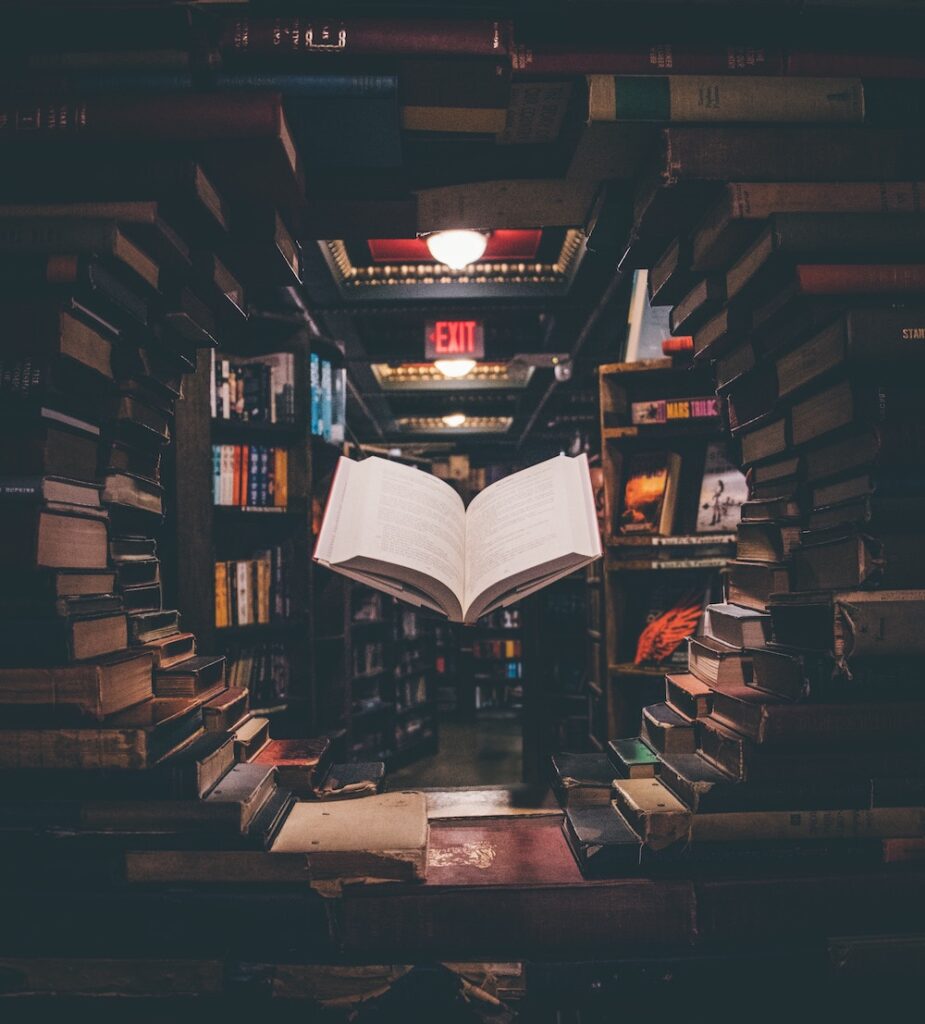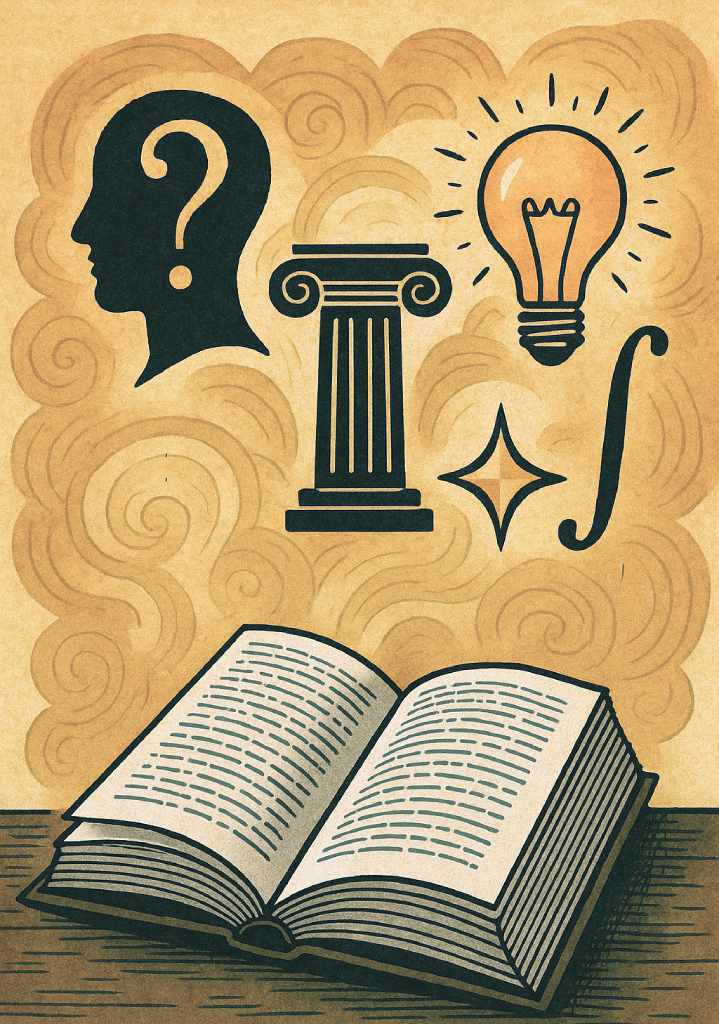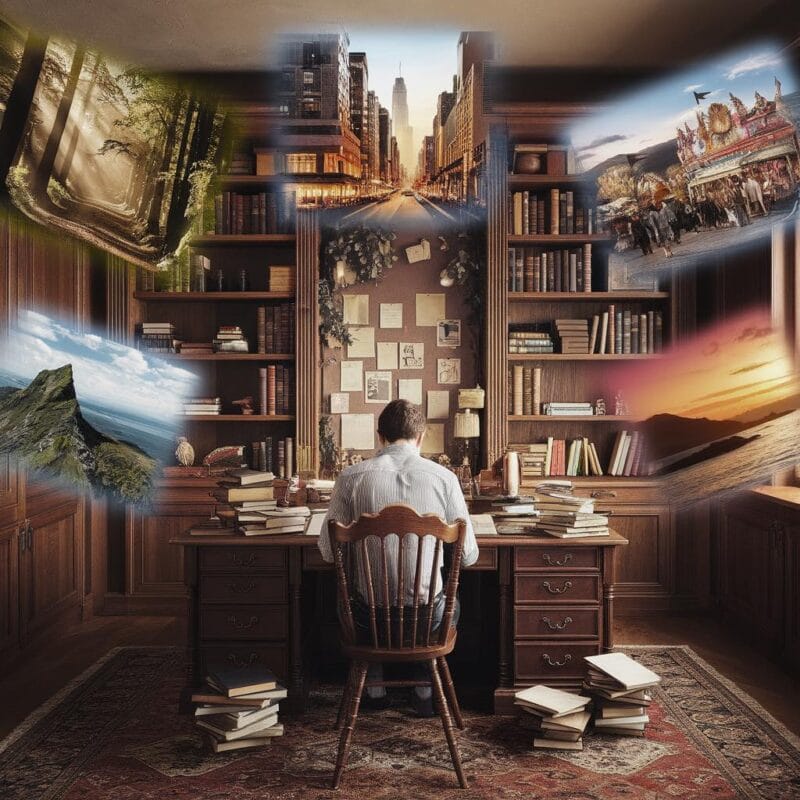Genre blending refers to the art of merging different genres or mixing elements from various literary traditions to create a unique and unconventional storytelling experience. It involves breaking free from the constraints of traditional genres such as romance, mystery, science fiction, or fantasy and instead embracing a more fluid approach that blurs the lines between them.
Hybrid genres emerge as a result of this genre blending and experimental approach. These hybrid genres defy easy categorization as they incorporate elements from multiple genres while creating something entirely new. They offer readers an exciting blend of familiar tropes with unexpected twists, providing a fresh perspective on storytelling.
Experimental fiction takes this concept even further by actively challenging established norms and conventions. It encourages literary experimentation in both form and substance, frequently pushing the boundaries of narrative structure, language usage, character development, and even plot advancement. The outcome is a thought-provoking reading experience that defies readers’ preconceptions and inspires them to connect with unconventional storylines.
While genre mixing and experimental writing could be invigorating for both authors and readers, they might not always be to everyone’s taste. These works’ unconventionality can provide difficulties for those expecting standard narrative structures, which would call for open-mindedness from readers who favor more traditional narratives.
In this article, we delve deeper into the world of unconventional storytelling. We will explore notable examples of hybrid genres in literature, examine how authors employ innovative techniques to push boundaries, discuss the impact these works have had on the literary scene, and consider their relevance in today’s evolving readership.
Key Elements and Techniques
As literature evolves, so does the blending of genres. The traditional boundaries of storytelling are being pushed and experimented with, resulting in an exciting exploration of narrative techniques. However, the fusion of genres should be approached with a deep understanding and respect for the foundations of each genre. It is crucial to strike a balance between innovation and maintaining the essence of storytelling.
Consider the chance discovery of romance among the cold mechanics of science fiction, or the pull of enchantment shimmering through the alleyways of a hard-boiled detective story. Such juxtapositions do more than merely create complex, multifaceted worlds; they also question, and frequently baffle, our expectations of narrative.
This delicious subversion produces unexpected moments that are sometimes amusing, sometimes scary, and always evocative. Furthermore, this genre synthesis has an almost magnetic attractiveness, attracting readers from many literary backgrounds and broadening the narrative’s circle of impact.

While these experimental narrative structures and devices may not be everyone’s cup of tea, they undoubtedly push the boundaries of literary traditions. They challenge both authors and readers alike to venture beyond their comfort zones in search of innovative ways to convey meaning and evoke emotional responses through literature.
When one enters the realm of experimental fiction, one encounters narratives that defy the gravitational pull of linearity. They may bounce and dance across time, like the capriciousness of Kurt Vonnegut’s Slaughterhouse-Five (1969), or they may meander through a stream of consciousness, a style immortalized by Joyce and Woolf, which reveals the labyrinthine passageways of the human brain.
In terms of narrative style, having unreliable narrators creates an additional layer of intrigue to experimental fiction. These narrators intentionally deceive or withhold information from readers, forcing them to question what is true and what is fabricated. This blurring of reality creates an atmosphere of uncertainty and inspires a critical analysis of the literary work.
In the same vein, narratives that employ multiple perspectives offer a diverse range of viewpoints on a single event or situation, giving readers a richer understanding of the story’s intricacies. This technique lets authors delve into the subjectivity of truth and challenges the notion that there is only one definitive version of events.
Stories can oscillate between characters by shifting viewpoints in a Faulknerian manner, providing a kaleidoscope view of events and feelings. The entire fabric of the written word becomes a playground for the inventive: authors might intersperse diary excerpts, fuse prose with screenplays, or integrate startling graphic components. In the most daring of these initiatives, readers are invited to co-create and mold the narrative arc, transforming each reading into a unique voyage.
By breaking the mold of linear storytelling, authors are able to explore complex themes and ideas from multiple angles, which creates a more dynamic reading experience. Nonlinear storytelling disrupts the conventional chronological order of events, exploring characters’ motivations and experiences. Fragmented narratives further enhance this complexity by presenting fragmented pieces of the story that readers must piece together themselves.

By breaking the mold of linear storytelling, authors are able to explore complex themes and ideas from multiple angles, creating a more dynamic reading experience
Then there’s metafiction, a storytelling approach that blurs the line between fiction and reality, with characters displaying self-awareness or even engaging the author in a dispute with the reader. Rather than serving as a mere “trick,” this method explores the porous boundaries between fiction and reality, encouraging reflection on the nature of both.
Furthermore, authors, traditionally the omnipotent puppeteers, are sometimes ushered onto the stage, engaging in enlightening, if not audacious, dialogues with their readers. This interplay, this conscious breaking of the fourth wall, lends a novel depth and reflexivity to the narrative, making us question the very nature of storytelling and our role in it.
Genre mixing and experimental writing both serve as incubators for literary creativity, pushing the limits of traditional storytelling. The ensuing storylines resound with profundity and passion when managed with finesse and a genuine appreciation for the craft. Experimental literature even foregoes a clearly defined storyline or closure in favor of ambiguity and contemplation, leaving readers stranded in a state of introspective wonder, similar to Julian Barnes‘ The Sense of an Ending.
Postmodernism and its Influence on Genre Blending and Experimental Fiction
Postmodern literature, with its avant-garde writing techniques, challenges traditional storytelling norms and embraces innovative approaches to narrative structure. These experimental fiction classics often challenge readers’ expectations and require an open mind to fully appreciate their unique qualities.
Self-reflexivity is an important feature of postmodern writing. By highlighting the act of creating fiction, authors blur the borders between reality and fiction. This metafictional technique, as stated in the preceding section, enables a deeper investigation of storytelling itself and encourages readers to question their assumptions about narrative structures.
Furthermore, postmodernism seeks to deconstruct traditional narratives by challenging notions of linear time and causality. Instead of following a straightforward chronological order, postmodern works may employ fragmented narratives or nonlinear storytelling techniques, as discussed earlier. This fragmentation disrupts traditional narrative structures and encourages active engagement with the text to reconstruct the story.
Impact on Reader Experience and Interpretation
One of the key issues that arise when genres are blended is the tension between reader expectations and author intentions. Readers come to a genre-blended work with preconceived notions about the conventions and tropes associated with specific genres. When these expectations are subverted or mixed together, it can lead to confusion and frustration for readers who may struggle to make sense of the narrative.

Furthermore, interpreting experimental fiction can be both a challenge and a reward for readers. On one hand, it offers an opportunity for intellectual stimulation and engagement as readers navigate unfamiliar narrative structures and unconventional storytelling techniques; this can lead to a deeper understanding and appreciation of the work. On the other hand, it requires effort on the part of readers to decode symbolism, decipher hidden meanings, and piece together fragmented storylines.
While genre blending in literature can be exciting and innovative, it is important for authors to consider how their choices may impact the reader experience. Striking a balance between experimentation and accessibility is crucial in order to ensure that readers are not alienated or left feeling frustrated by works that defy traditional genre structures.
The Pitfalls of Mixing Genres: When It Works and When It Doesn’t
As readers, we should embrace these experimental narratives but also be mindful of the potential challenges they present. We must navigate through uncharted territory with an open mind while still appreciating the value and significance of traditional storytelling techniques.
While some applaud the innovation and freshness that these works bring to the literary landscape, others argue that they alienate readers and undermine the authenticity of traditional storytelling approaches. One of the main points of contention revolves around cultural reception; traditionalists argue that genre-blended literature dilutes the distinctiveness of genres, making it difficult for readers to identify with or fully appreciate a work. They believe that by blending different genres, authors risk losing the essence and depth that each genre offers.
Furthermore, debates on literary authenticity arise when discussing genre-blended works. Critics question whether these experimental storytelling approaches are merely gimmicks or legitimate attempts at pushing boundaries and challenging conventions. Some argue that blending genres can be seen as a form of pandering to popular trends rather than genuine artistic expression.

However, proponents of genre-blended literature argue that it is precisely this innovation and willingness to break free from traditional storytelling molds that make these works exciting and relevant. They believe that embracing genre-blending opens up new avenues for creativity and allows for fresh perspectives on familiar themes.
Moreover, it is important to note that not all experiments in genre blending or experimental fiction yield successful results. Some works may sacrifice coherence or accessibility in favor of artistic expression or innovation. As such, readers should approach these works with an open mind but also exercise critical discernment.
Celebrated Works and Their Contributions to the Hybrid Genre
This section lists some notable examples of genre blending and experimental fiction that have captivated readers throughout the years. While some of these books mix genres like romance and sci-fi, others really focus on changing how the story itself is presented.
The following genre blending and experimental novels showcase the creative and innovative minds of authors who dared to mix different genres told in different ways, resulting in unique and groundbreaking narratives.
Pale Fire by Vladimir Nabokov
Treading the boundaries between fiction and metafiction, Nabokov’s Pale Fire (1962) stands as a towering achievement in the realm of experimental literature. The novel, in essence, resists straightforward categorization, offering instead a mirroring world of annotations, poetic brilliance, and a protagonist’s potentially unreliable commentary.
At the heart of Pale Fire is a 999-line poem by a fictional poet named John Shade. This intricate piece speaks of life, death, the nature of existence, and the ever-elusive concept of truth. However, what propels the novel into the realm of the extraordinary is not just the poem itself but the extensive commentary that follows, authored by Shade’s self-proclaimed colleague, Charles Kinbote.
Nabokov’s genius in Pale Fire is manifold. On one hand, he crafts a mesmerizing poetic piece in Shade’s verses, which could stand alone as a significant work. Yet, with Kinbote’s peculiar annotations, Nabokov introduces layers of intrigue, pushing readers to become active participants in deciphering the narrative’s true essence. This structure blurs the lines between poetry, fiction, and critical analysis and raises profound questions about authorship, interpretation, and the nature of artistic creation.
The Left Hand of Darkness by Ursula K. Le Guin
Le Guin’s magisterial novel stands as a beacon in the domain of speculative fiction that challenges conventional ideas. Set on the planet Gethen, The Left Hand of Darkness (1969) explores themes of gender, politics, and human nature in an alien context. It tells the story of a human ambassador, Genly Ai, as he navigates the complex and androgynous society of the Gethenians, who can choose and change their gender identity.
This one-of-a-kind biological characteristic becomes the main focus of Le Guin’s investigation of societal conceptions and cultural identity. Aside from its genre blending aspect, the story offers a profound contemplation on what it is to be human, questioning conventional assumptions of gender and identity. The novel is a thought-provoking examination of how the notion of gender impacts our perceptions of ourselves and society.
Le Guin’s narrative is not just a thought experiment but a deeply immersive experience that delves into the psychology of characters and societies in transition. This pioneering work of experimental fiction has had a profound and lasting impact, not only within the genre but also in broader discussions of gender and identity, solidifying its place in the literary canon.
Slaughterhouse-Five by Kurt Vonnegut
Vonnegut’s Slaughterhouse-Five is a seminal work of science fiction and anti-war literature that skillfully blends various genres and employs a highly experimental narrative structure. Its protagonist, Billy Pilgrim, becomes “unstuck in time,” resulting in a narrative that flits across different eras and events, from the World War II bombing of Dresden to an alien abduction.
Vonnegut weaves together elements of autobiography, science fiction, and satire presented in a non-linear narrative where events are presented out of chronological order, reflecting Billy’s own disjointed perception of time. Through this disorienting structure, Vonnegut offers a searing critique of war, the nature of existence, and the illusion of free will, offering a meditation on the inescapable tragedies of life.
If on a winter’s night a traveler by Italo Calvino
Calvino’s If on a winter’s night a traveler (1979) is a postmodern masterpiece that eliminates barriers between the reader and the text. It is a metafictional journey in which readers discover themselves attempting to read the very book they are holding.
The novel is structured as a series of intertwined narratives, alternating between chapters of a story and chapters that follow the reader’s quest to find the complete version of that story. Every other chapter presents the beginning of a different story, each left tantalizingly unfinished, juxtaposed against the second-person narrative of the reader’s quest to complete them.
Calvino blurs the lines between fiction and reality, encouraging active participation in the storytelling process. As you follow the various narratives within the book, you remain constantly aware of the act of reading itself, making If on a winter’s night a traveler a metafictional exploration of the reader’s relationship with literature.
The Blind Assassin by Margaret Atwood
Atwood, known for her intricate narratives and profound explorations of human relationships, truly outdid herself with The Blind Assassin (2000). This novel is not just a story; it’s a masterful layering of stories within stories, which challenges readers to discern truth from fiction and understand the multifaceted nature of human experiences.

At its core, the novel traces the life of Iris Chase Griffen as she looks back on her tumultuous past, the tragic death of her sister Laura, and the socio-political upheavals that punctuated their lives. Yet, within this tale, Atwood introduces another narrative—a science fiction story titled The Blind Assassin, purportedly written by Laura. This embedded story is about a clandestine romance between two unnamed lovers, interspersed with episodes of a fantastical tale involving blind assassins, sacrificial virgins, and distant planets.
The work stands out for its unique combination of genres, including family drama, historical fiction, and science fiction. Atwood goes beyond merely merging seemingly unrelated genres by creating a convergence that results in a deeper, more intricate narrative. Through this approach, she explores how stories, both personal and societal, influence the way we perceive the world.
House of Leaves by Mark Z. Danielewski
House of Leaves (2000), by Mark Z. Danielewski, is a mind-bending novel that questions the entire notion of narrative form. It is more than a book; it is an experience. The novel is about a family that moves into a home only to find that it’s much bigger on the interior than they had first thought. This seemingly straightforward premise rapidly spirals into a complex narrative that incorporates multiple narrators and a labyrinth of textual and visual elements.

The layout of the book itself is a work of art, a unique format replete with footnotes, mirrored layouts, and varied typographies, with text arranged in unconventional ways that reflect the disorienting nature of the story. The book is a prime example of how experimental fiction can immerse readers in a narrative as unique and unsettling as the story it tells, challenging readers to engage actively, becoming participants rather than mere observers.
Cloud Atlas by David Mitchell
A truly innovative literary odyssey, Mitchell’s Cloud Atlas (2004) is structured as a series of interconnected stories spanning different time periods and places, from the 19th-century Pacific to a post-apocalyptic future. Each story is written in a distinct style befitting its era and genre, including a historical adventure, a dystopian science fiction tale, and even a postmodern epistolary novel. They explore themes of predation, reincarnation, and the cyclical nature of history.
The book is a literary classic because of the skillful way in which it combines different writing styles. As the stories go, Mitchell weaves a narrative that defies the limits of traditional storytelling by making links across time and place. Mitchell’s storytelling talent is on full display in his ability to switch between genres and tones while keeping the drama on track. Cloud Atlas encourages its readers to think about how their own lives are related to everyone else’s throughout history.
These works challenge not just the constructs of storytelling but also the very way we, as readers, interact with and perceive literature. They compel us to question, to delve deeper, and to appreciate the multifaceted layers of meaning interwoven into the text. They are experiences that are immersive and transformative, urging us to see beyond the confines of genre labels and conventional structures.
Collectively, these writers have paved the way toward redefining what literature may be, from the complex storylines of Mark Z. Danielewski to the gender-bending worlds of Ursula K. Le Guin. As we consider these works, it becomes apparent that literature exists beyond any strict categorization. It’s an infinite landscape where anything may happen, where creativity flourishes, and where tales are always being pushed and reinvented.
As we continue our literary journey, may we carry with us the spirit of exploration and the belief that the next great work of genre blending and experimental fiction may be waiting just around the corner, ready to transport us to unimagined realms and challenge our understanding of storytelling itself.
Further Reading
Everything Everywhere All in One Novel by Lincoln Michel, Esquire
Is Blending Genres the Worst Idea You’ve Ever Had? by Jay Wilburn, Lit Reactor
The Finer Points of Experimental Fiction by Marisa Crane, Literary Hub
10 Experimental Novels That Aren’t Hard To Read by K. W. Colyard, Bustle
Bro, why is postmodern literature so weird? by Emerson Segraves, VOX ATL




